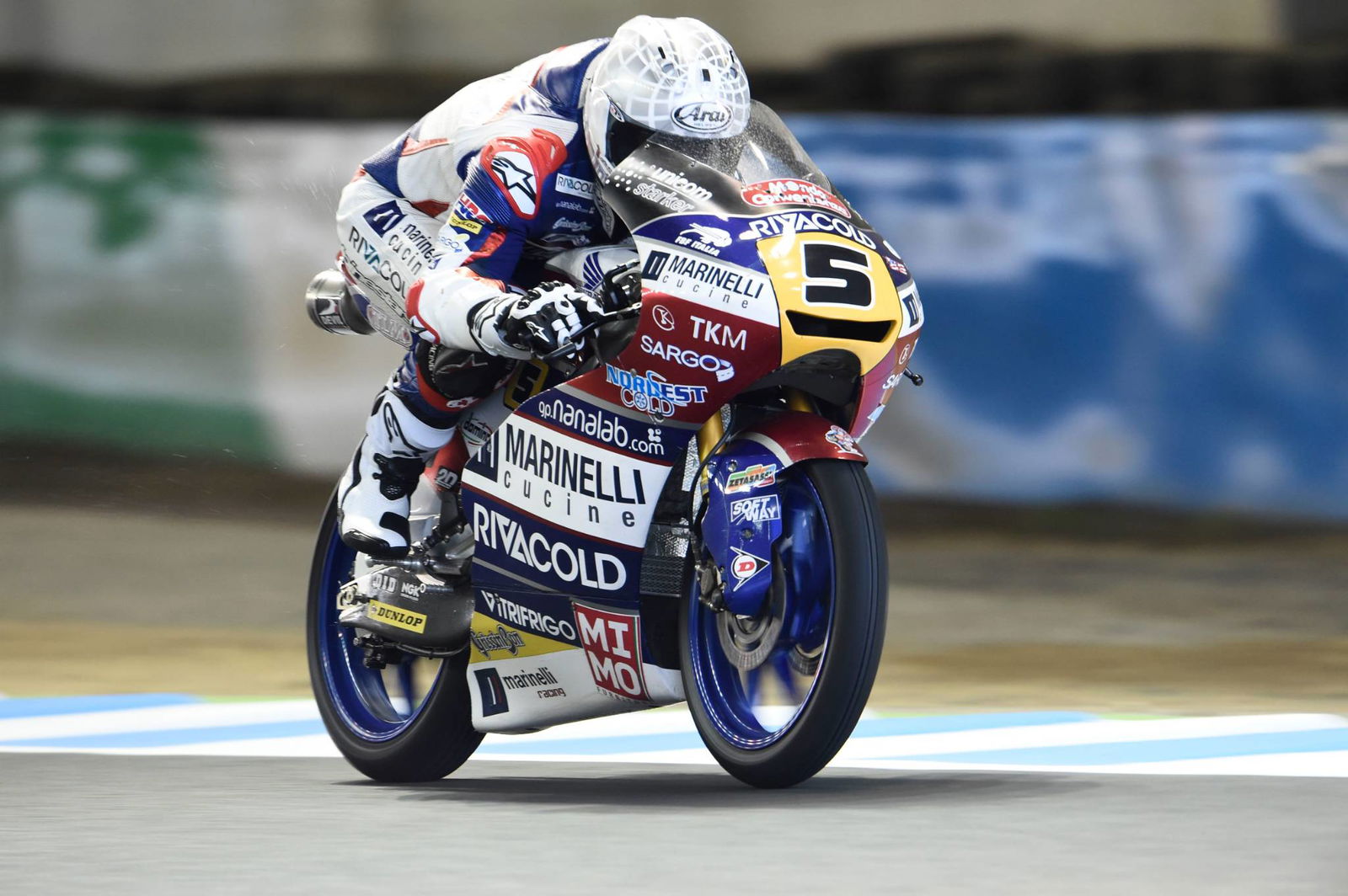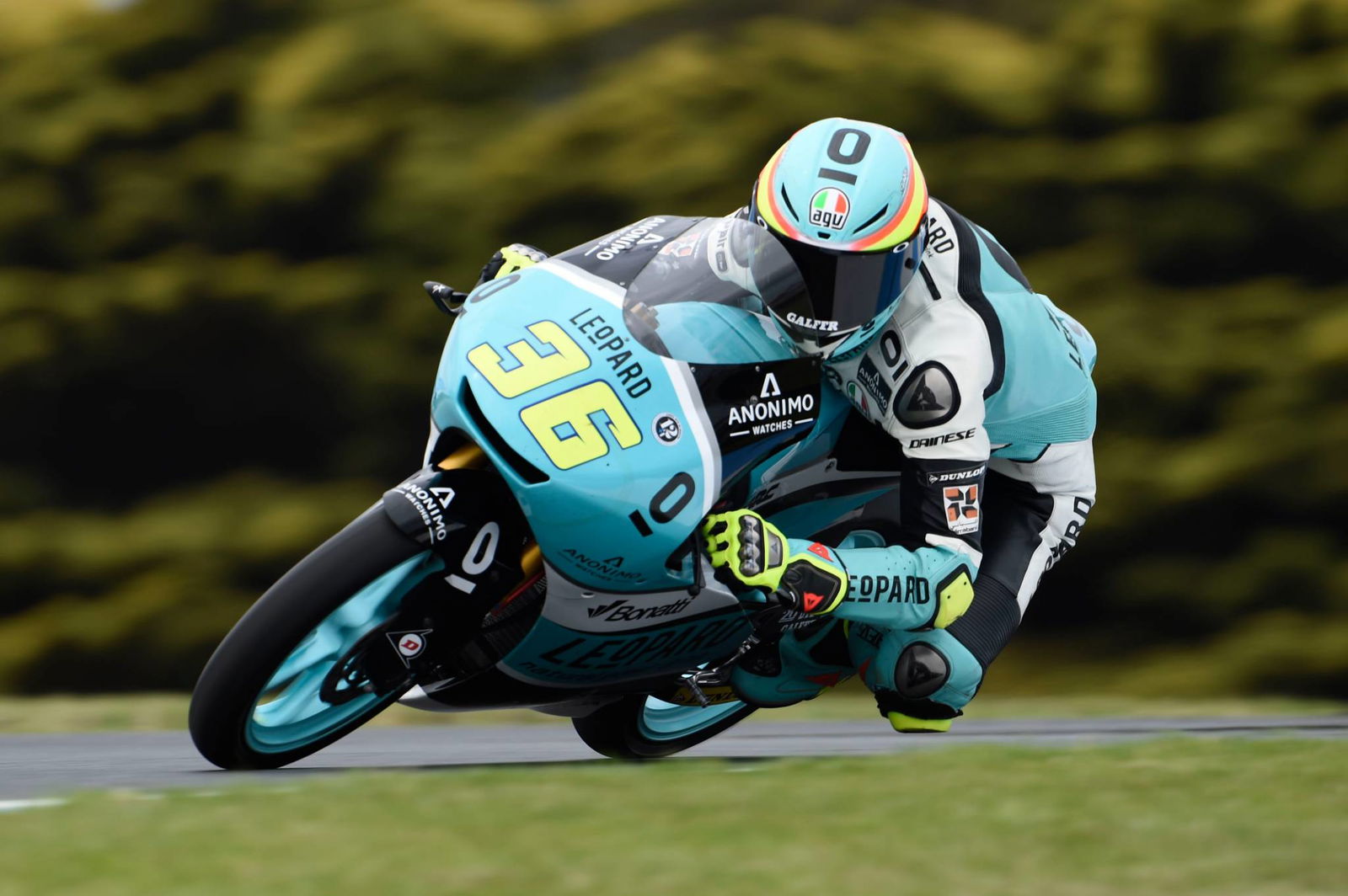MotoGP Australia: Last chance for Moto3 to avoid qualifying change

Moto3 riders have just three races left in which to change their behaviour in practice and qualifying, MotoGP Race Director Mike Webb has warned.
If - despite the threat of even harsher penalties - the junior class competitors continue to deliberately ride slowly after leaving the pits, while looking for a rider to follow, the format of qualifying could be drastically modified for 2018.
"There are loads of solutions available, but first of all we - as Race Direction - and also Dorna, don't want to change the format of qualifying if we can help it," Webb told Crash.net at Phillip Island on Thursday.
"But, personally, I'm getting to the point where enough is enough.
"My job is about running a safe race, on time, with everyone having a fair chance at a race. It's not about dishing out grid penalties all day long.
"We have to stop this behaviour and if the penalties don't work then we won’t have any option but to change qualifying."
'We played the clip of Reinhold Roth'
After the latest episode of slow riding at Aragon, Webb called the whole Moto3 class together for a meeting at Motegi.
"Because they are kids, just telling them things - especially in English when most are not native English speakers - perhaps doesn't quite get through. So I showed them [video clips] of what I am concerned about, which we've all seen:
"The final minutes of qualifying at Aragon and the entire field coming out of Turn 15 and looking around. One rider trying to go fast and there's no room to go past.
"Plus the exit of pit lane in the final minutes of qualifying at Misano, Red Bull Ring, Sachsenring. In all of those they were dribbling out of pit lane and basically stopping, trying to see who is coming. When there are one or two riders who are not part of that [slow riding] game, at times there is no room for them to get past.
"So I showed them film clips of all of that as well as a clip of a couple of riders - from Austin a few years back - who were both looking around, ran into each other and fell off.
"There was a bit of laughter in the room, 'oh yeah, we're stupid aren't we…' Then immediately we played the clip of Reinhold Roth who was paralysed by running into a slower rider. The laughing stopped. I said, 'guys, this is not a joke, you can lose your life'.
"I hope that gets through.
"So the penalties will get stronger and we'll make sure 'if you do this, your race will be affected': Last on the grid, then starting from pit lane, then being disqualified and having to go home.
"The problem is we are saying to them, 'don't ride slowly, it's dangerous'. But what they are hearing is 'don't get caught!'
"I was hoping that by giving out fines we could get also teams to influence the behaviour, but it made no difference. They didn't care. That's why we are now targeting race results: You either start with a significant disadvantage for the race or you don’t race at all, those are the next steps.
"We've got three more races to see if that works before we have to make a decision about whether we need to change qualifying."
'The problem has moved to the first sector'
Race Direction has largely eradicated slow riding for the majority of the time riders are on track, by analysing sector times and issuing automatic penalties.
"Our slow sector analysis takes into account everything they do during a practice session and if they are consistently being slow on track that's an automatic penalty just based on timing," Webb explained.
"Of course we video review it just to see if there is a reason for them being slow.
"We've had very few repeat offenders since we introduced harder penalties for it at Motegi 2016. So that part is more or less working.
"But we don't count the very first lap of any session, plus sector one of an out-lap and sector four of an in-lap. So they've seen that sector one of an out-lap doesn't count and they deliberately go slow - even if there is no advantage to be gained. It's insane!
"So they found that loophole and we responded by introducing penalties for going super slow on the first sector of an out lap. That is a judgement call, because there is no timing, so it's decided purely by video footage."
'Next time you will go home'
"The change that has come about since Aragon is that the previous protocol referred to 'repeat offenders' as being at the same event. From Aragon onwards we changed that protocol so that repeat offences now count for the whole season.
"Anything to date; a slow sector, slow out of pit lane, or disturbing someone on the racing line. All of those we consider slow offences. Currently, there is only one rider with 0 offences, a handful with 1 offence and a big chunk of riders with 2 or more.
"What I said at Motegi was, 'everything you've done previously counts and if you are caught again we'll look at how stupid or how strong an offence it was, plus how many offences you've had in the past'.
"If you've had a lot in the past and done something stupid, you are starting from pit lane. The next time you will go home."
Changing qualifying…
If the new harsher penalties don’t work, then there will be no choice but to change the Moto3 qualifying format for 2018.
"The ways to change qualifying are either to make it very difficult to improve your lap time by following someone, which is splitting the sessions and releasing them one at a time.
"Or remove the value of making a fast lap behind someone, which means things like an average lap time over the three sessions so that one fast lap won't change much.
"There are various ways around it, but they all have other problems associated with them.
"The biggest one in splitting up sessions in any way is achieving some kind of fair outcome if the weather changes mid-qualifying. Plus scheduling and the amount of human intervention it would need to organise.
"All of the split-session possibilities, and there are lots of them, require management and careful thinking. Especially if it starts raining. There are a lot of knock-on things we have to be aware of before we implement any changes. We would need to be very clear that it's going to work and going to be fair.
"But by far the best solution is if the riders realise they are behaving stupidly, that it's dangerous and stop doing it.
"We know it's specific to the class because when those same riders go up to Moto2 the problem is not there. It's only on the odd occasion."


